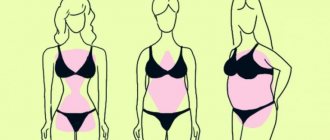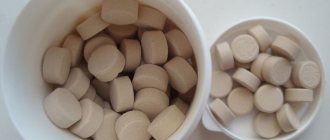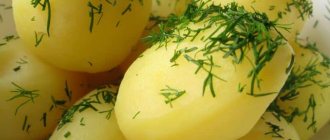Experiment
Scientists from American University conducted an experiment on assessing the weight of food by eye.
Two groups of subjects took part in it: doctors and people far from medicine. As a result, it was determined that, regardless of education, the difference in the estimate of the number of grams on a plate compared to the actual one ranged from 22 to 48%. This means that a person cannot always determine by eye the size of the portion in grams that he is going to eat. From this it turns out that calculating the number of kilocalories (a fairly popular method for losing weight) is not always adequate and corresponds to what is actually eaten. Be that as it may, it is not always possible to weigh food on a kitchen scale. The solution to this problem turned out to be simple.
How much to put on a plate
It is always important to monitor the amount of food consumed, including when eating properly. Research shows that people do not always adequately estimate the amount of food they eat.
And, by the way, you can find out if you are overeating by performing a simple test, which I mention in the article “Why we overeat.”
There are several ways to measure a portion.
Using scales, spoons and glasses, as well as using the palm of your hand. The last one is the most popular and simplest. But not always applicable - for example, you wouldn’t measure soup with your palms, would you?
Pharmacy-like precision
Scales - this is probably the most expected method - will show the weight literally in grams. And the longest and most inconvenient.
But, if you want mathematical accuracy, then it may be useful to you, especially at first. True, you will have to outweigh everything you cook.
Kitchen scales should always be on hand. However, having filled your hand, as they say, after a while you yourself will be able to determine the required amount by eye.
It couldn't be simpler
The easiest way is to adhere to the “fist rule” - approximately this (one or two fists, everything is individual here) is the volume of our stomach on an empty stomach, if it is not distended.
Hence the need to put so much food in it so as not to stretch it. At the same time, of course, you shouldn’t deceive yourself, and after eating “one fist”, add another one to the plate.
Let me remind you that the easiest way not to overeat is to reduce the plate, and at the same time the spoon. A study conducted by Cornell University in the USA among nutrition experts confirms that even nutritionists can make mistakes about portion sizes. A group of experts were given plates and spoons of different sizes and asked to help themselves to ice cream. As a result, those who had larger plates or spoons unknowingly put in 31% and 14% more ice cream, respectively, than those who had smaller cutlery.
We look at the palm
This method is more complex, but more accurate compared to the previous one. And in fact, it’s very simple: you look at your palm and you know exactly what portion should be a normal size.
Just let's make it clear that all weight measures here are taken without a slide. Well, now the main thing to remember is that a portion of food at one time is:
The protein product is the size of the palm of your hand. This is approximately 100 grams of meat (chicken or fish)
Complex carbohydrates – palm or fist
Potatoes, rice – front part of the fist (approximately 75-100g)
Vegetables (salads) – two palms folded together
Fruit – clenched fist (about 200g)
Fats – one phalanx of the thumb
Greens - do not confuse them with vegetables. All kinds of salads, dill, parsley and the like can be eaten without restrictions.
The palm and fingers are also suitable as “weight measures”. For example:
A teaspoon (corresponds to the size of your thumbnail) is 5 grams (for example, this is the amount of vegetable oil per day)
A tablespoon is already equal to 10 grams
A handful is equivalent to two tablespoons of liquid (so we found something to measure our soup with). In general, a serving of soup, as nutritionists say, is 150-200g, or a regular glass.
On the advice of nutritionists
Nutritionists believe that to lose weight, a person needs to reduce the calorie content of their daily food by about 500 kcal.
And then his diet will be equal to:
two protein palms and one carbohydrate palm
three fists of fruits and vegetables
one phalanx of the thumb fat
Advice: as for me, it is not at all convenient to measure using the palm of your hand - it is better to mentally divide the plate into 4 parts. Give a quarter to proteins, the other quarter to grains. And set aside half for vegetables and salads. Visual perception, by the way, is one of the effective ways to reduce food consumption. Often we don’t even notice how we eat a bag of chips or cookies, “carrying” one thing after another.
Determining the correct amount of food is described quickly, simply and clearly in this video:
This is mathematics, dear friends. What do you think about this? Do you use any of your own methods to determine portion size?
What will overeating lead to?
No one is immune from overeating.
And if you eat an excessive amount of food, a person feels heaviness, he is not inclined to work, thought processes are inhibited, and laziness appears (read how to overcome laziness in one of the articles on our website). Because the body puts all its strength into overcoming and digesting a huge amount of food. Let's consider the distribution of food components that enter the gastrointestinal tract (GIT).
A person needs approximately 1.8-2.0 g of protein per kilogram of weight per day. When consumed in larger quantities, amino acids and polypeptides (components of proteins) from foods will not be absorbed. But food will stagnate in the gastrointestinal tract, and rotting processes will begin. Constipation (constipation) may occur. Signs of gastrointestinal motility disorders appear on the skin of the face. The functioning of the glands is disrupted. And this most often leads to the appearance of an inflammatory rash. Read our article on how to properly care for your facial skin to know how to avoid such negative manifestations.
The situation is different with carbohydrates and fats. All of them are used by the body for its needs. In this case, the amount of fats and carbohydrates eaten is distributed according to the needs of the body. These components are used for:
1) digestion of incoming products; 2) brain function; 3) ensuring a basic level of cell activity (this is the minimum amount of energy that is necessary to maintain life); 4) cells perform their special functions that require increased energy costs; 5) contraction of skeletal muscles; 6) accumulation of glycogens in the liver and muscles.
After eating, carbohydrates in the gastrointestinal tract undergo many changes. Eventually they are broken down into glucose, which is absorbed into the blood in the small intestine. Thanks to insulin, it reaches all cells of the body. And its entry into the brain, liver and muscles is determined by the concentration gradient. The more glucose circulates in the blood, the more it will go to these organs. If you overeat, the amount of glucose will increase sharply, and its consumption by the organs will accordingly increase. The muscles and liver will accumulate glycogen (normally, the muscles of a 65 kg woman contain 400 grams of glycogen). If there is a lot of this glycogen, it begins to enter fat cells. It is very difficult to get him out of there.
The same thing happens with fats. But when one gram of carbohydrates is broken down, 9 kcal of energy is released. For proteins and fats, this figure is 4.1-4.3 kilocalories.
Therefore, the serving size for proper nutrition should correspond to the needs of the body.
The body's need for food products
For the body to function normally, it must receive sufficient, and most importantly, a balanced amount of proteins, fats and carbohydrates. It is very important that food is environmentally friendly, although this is currently quite difficult to ensure.
Squirrels
They are the basis of human nutrition and life. You need to get proteins per day at the rate of 1 g per 1 kg of weight. These are minimum indicators, because a growing teenager should receive at least 5 g of protein per kilogram of body weight. A person gets proteins from meat, fish, dairy products, and legumes. After a full meal, up to 30 g of protein is absorbed within three hours.
In fact, proteins are a component necessary for the “construction” of the body and the production of all vital substances - enzymes , hormones , etc. It is with proteins that a person receives the so-called essential amino acids , which are not synthesized in the body. However, it is important to understand that excess protein can cause intoxication in the body.
Carbohydrates
The minimum requirement of carbohydrates per day is 300 g. The body receives carbohydrates by consuming fruits, vegetables, starches, and grains. Carbohydrates are the main “fuel” for the body, so their quantity largely determines a person’s condition. But if a lack of carbohydrates leads to disruption of metabolic processes, then their excess leads to the formation of excess fat. Excess weight gain occurs if more than 500 g of carbohydrates enter the body in one meal, as this leads to a sharp increase in glucose in the body, which leads to an increase in insulin and stimulation of the synthesis of fats, which are deposited in fat depots.
Fats
The absorption of fats in the body occurs during the consumption of protein foods. Fats are an essential element of a balanced diet. They are a source of energy and essential fatty acids. They are also important for the absorption of vitamins. The most important for the body are vegetable fats, consisting of unsaturated fatty acids. They do not contain cholesterol and are easily digestible. Animal fats are digested more slowly and contain a lot of cholesterol.
It is recommended to consume vegetable and animal fats in a 2:1 ratio. However, many modern nutritionists argue that the amount of animal fats can generally be reduced to a minimum.
Vitamins and minerals
In addition, dietary fiber, vitamins and minerals contained in food are important for the body. Basically, the body receives them from plant foods - greens, vegetables, fruits. Some of them contain a lot of fiber .
Determining the serving size
I Simple method
The simplest way to determine the required weight and volume of food is the fist rule. The volume of the stomach in a calm state (on an empty stomach) is equal in size to a fist. In order not to overstretch the muscular walls of the stomach and not lead to its excessive activity, it is necessary to put into it exactly as much as it can withstand. In this case, eating should stop when there is no food on the plate. You can’t give yourself “several fists” during one meal. To do this, it is better to remove pots and pans away from your eyes.
II Exact method
There is another method for determining how much you eat.
It's heavier. But using this method you can more accurately determine the serving size in grams. It is necessary to remember that: 1) the palm of an adult woman is equal to 100 grams of white meat (chicken or fish);
2) 200 g occupy the same volume as a woman’s fist (the same amount in one glass); 3) half a teaspoon the size of a thumbnail (that’s 5 grams), for example, that’s how much sunflower oil you should consume per day; 4) a tablespoon holds 10 g (the area of two thumbnails); 5) a handful of one palm holds two tablespoons of liquid; A portion of salad, porridge, and pasta can also be placed here.
How much can you eat at one time?
How many carbohydrates do you need per day when losing weight?
You can calculate what single servings you should have in order to lose weight using two methods:
Portion has limitations
- With the help of hands (palms, fists, fingers) - it is generally accepted that the human stomach is equal in volume to two of its fists. Therefore, in order not to stretch or burden it during the meal, many people measure a single portion using their fist, palm or fingers. For example, a single serving of meat or meat products should be no larger than the size of a palm without fingers. Vegetables and herbs consumed in salads or fresh at one time should be placed in two palms folded together. Fruits consumed at one time (oranges, apples, peaches) should have a volume equal to or slightly less than that of a hand clenched into a fist. In this way, you can very quickly and quite accurately calculate how much of certain foods you can eat at one time.
- By weight - this method allows you to determine which product and in what exact quantity should be consumed during one meal. In this case, using the above method, the daily requirement for kilocalories for weight loss is calculated, a diet of 4-5 meals a day is drawn up, the total calorie content of individual meals is divided between the products included in them, after which the weight of individual products is calculated using tabular data. The calculated amount is weighed using good electronic household scales with an accuracy of 0.1 g. This method allows you to eat exactly as much as was calculated. Compared to the previous one, its disadvantages are the large amount of time spent weighing products and the mandatory presence of fairly accurate scales.
Important! When asked about what portion of food an adult should have to lose weight in volumetric terms, many doctors and nutritionists answer - no more than 200-250 ml. With this amount, the stomach is not overloaded and digests food most efficiently.
Recommendations from nutritionists
There are also certain recommendations from nutritionists.
In their opinion, there are correspondences between hands and dishes containing different nutrients: 1) protein food should be like the palm of your hand; 2) a vegetarian plate (fruits, vegetables, salads without dressing) can be the size of a fist; 3) the part that falls on complex carbohydrates is equal to one palm; 4) two phalanges of the thumb are equal to the amount of fat on the plate.
In order to lose weight without harm to your health and without feeling hungry, you need to reduce the energy output of food by 500 kcal. Based on these calculations, a person needs three palms per day (two protein and one carbohydrate), three fists and one phalanx of the thumb. To satisfy your hunger, you can increase your vegetable portion.
What to eat for 500 kcal in one day
How many calories are in 1 kg of fat?
Very often on the Internet, users enter into a search engine the query “what can you eat for 500 kcal for the whole day,” and the service produces a lot of results with advice on how to lose weight by consuming such a small amount of calories, breaking it up into 4-5 meals . But in practice, these tips are not effective and are harmful to health.
500 calorie diet
The fact is that daily nutrition with a similar energy value (500 Kcal) is so meager (3-4 times less than the minimum requirement for maintaining normal weight and 1.5-2 times less than the norm for weight loss) that the body will equate it to starvation , with all the ensuing consequences. So, only 1 week of such a “diet” can lead to digestive problems, weakness, lethargy, decreased immunity, insomnia, and deterioration of the emotional state.
On a note. Thus, by calculating the portion size for weight loss, you can independently, without resorting to the advice of specialists, quickly and without harm to your health, get rid of extra pounds.
However, you should not get carried away with diets, since over time the body gets used to a certain diet and, feeling a lack of energy, begins to accumulate fat, while breaking down muscle tissue, which requires more energy to maintain. Therefore, the ideal option would be to combine short-term diets with constant training, periodic stay in the fresh air, and daily jogging.
Polo Springfield
985 ₽ More details
Springfield shorts
2599 ₽ More details
Springfield Jackets










